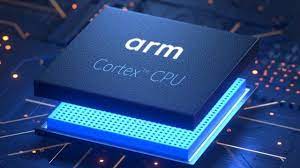The market for processing chips for artificial intelligence is dominated by Nvidia and it is now vying for personal computers, a longstanding bastion of Intel.
Nvidia has discreetly started producing central processing units (CPUs) that would use Arm Holdings’ technology and run Microsoft’s Windows operating system.
Microsoft is working with the AI chip giant to assist in the development of Arm-based processors for Windows PCs. According to preliminary third-quarter figures from research firm IDC, Microsoft’s plans target Apple, which has nearly doubled its market share in the three years since introducing its own Arm-based CPUs internally for its Mac computers.
Advanced Micro Devices also intends to produce PC chips utilizing Arm technology.
AMD and Nvidia could start selling PC chips as early as 2025, in addition to Qualcomm, which has been producing Arm-based laptop chips since 2016, Nvidia and AMD would also produce such chips. Qualcomm wants to provide more information about a flagship processor that a group of ex-Apple engineers built, during an event on Tuesday that would be attended by Microsoft executives, including vice president of Windows and Devices Pavan Davuluri.
Nvidia shares ended the day up 3.84%, while Intel shares ended the day down 3.06%. At closing, shares of Arm were up 4.89%.
The efforts of Nvidia, AMD, and Qualcomm might upend the long-dominant PC sector of Intel, which is now coming under increasing pressure from Apple. Apple’s proprietary CPUs enable Mac computers to have faster performance and longer battery life than chips with higher energy consumption. Microsoft executives want to match the performance of Apple’s Arm-based chips since they have seen how effective these chips are at processing AI.
The work to migrate the Windows operating system to Arm’s underlying processing architecture, which has long powered smartphones and their small batteries, was spearheaded by Qualcomm under Microsoft’s direction in 2016. Microsoft offered Qualcomm an exclusivity agreement to provide Windows-compatible chips until 2024.
Microsoft has urged others to enter the market after that exclusivity agreement expires.
“Microsoft learned from the 1990s that they don’t want to be dependent on Intel again, they don’t want to be dependent on a single vendor,” claimed Jay Goldberg, CEO of finance and business consulting firm D2D Advisory. “If Arm really became a major player in PC (chips), Qualcomm would never be allowed to be the sole supplier.”
Microsoft has pushed the engaged chipmakers to incorporate cutting-edge AI capabilities into the CPUs they are developing. The business expects AI-enhanced software, like its Copilot, to play a bigger role in Windows usage over time. Future processors from Nvidia, AMD, and other manufacturers will need to dedicate the on-chip resources necessary to make that a reality.
If Microsoft and the chip companies move on with the plans, success is not guaranteed. The x86 computing architecture, which is used by both Intel and AMD, has been the subject of decades and billions of dollars’ worth of software development work for Windows. The switch to designs based on Arm could be difficult because software written for x86 chips does not immediately work on those platforms.
A laptop running ChatGPT-like functionality directly on the device was recently displayed by Intel, which has also been integrating AI features into its CPUs.
A request for comment was not immediately answered by Will Moss, a spokesperson for Intel. SemiAccurate, a chip-focused publication, first revealed AMD’s foray into the Arm-based PC market.

















